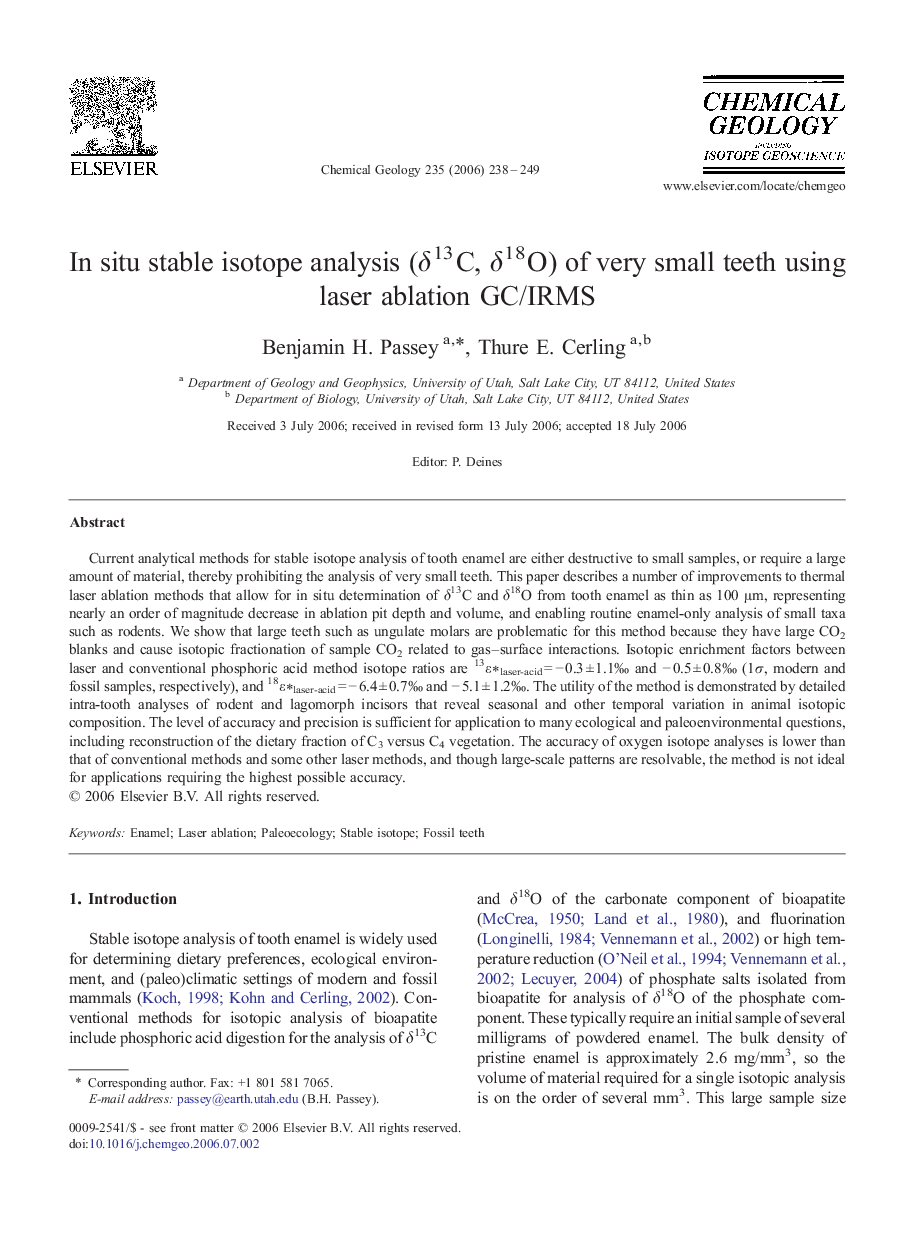| Article ID | Journal | Published Year | Pages | File Type |
|---|---|---|---|---|
| 4701249 | Chemical Geology | 2006 | 12 Pages |
Current analytical methods for stable isotope analysis of tooth enamel are either destructive to small samples, or require a large amount of material, thereby prohibiting the analysis of very small teeth. This paper describes a number of improvements to thermal laser ablation methods that allow for in situ determination of δ13C and δ18O from tooth enamel as thin as 100 μm, representing nearly an order of magnitude decrease in ablation pit depth and volume, and enabling routine enamel-only analysis of small taxa such as rodents. We show that large teeth such as ungulate molars are problematic for this method because they have large CO2 blanks and cause isotopic fractionation of sample CO2 related to gas–surface interactions. Isotopic enrichment factors between laser and conventional phosphoric acid method isotope ratios are 13ε⁎laser-acid = − 0.3 ± 1.1‰ and − 0.5 ± 0.8‰ (1σ, modern and fossil samples, respectively), and 18ε⁎laser-acid = − 6.4 ± 0.7‰ and − 5.1 ± 1.2‰. The utility of the method is demonstrated by detailed intra-tooth analyses of rodent and lagomorph incisors that reveal seasonal and other temporal variation in animal isotopic composition. The level of accuracy and precision is sufficient for application to many ecological and paleoenvironmental questions, including reconstruction of the dietary fraction of C3 versus C4 vegetation. The accuracy of oxygen isotope analyses is lower than that of conventional methods and some other laser methods, and though large-scale patterns are resolvable, the method is not ideal for applications requiring the highest possible accuracy.
